Visiting Places in Chikkamagaluru & Mudigere
Chiikamagaluru – 43 km
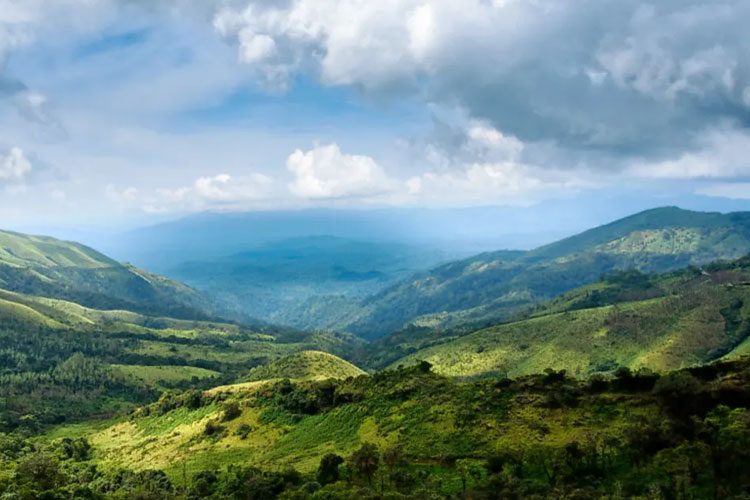
Chikmagalur (Chikkamagaluru) is a hill station in Karnataka, a state in southwest India. The great king of the Hoysala Empire, Veera Ballala II (1173 – 1220 CE), has been known to have built the Amriteshwar Temple at Amrithapura in Tharikere Taluk. To the north is Baba Budangiri, a mountain range in the Western Ghats. The Mullayagiri is the highest peak hill station in Karnataka. The cascading Hebbe Falls lie in an area of coffee plantations was first cultivated in Chikmagalur in India.
Some of the other tourist attractions include: Hill stations in the district are: Kemmangundi, Kudremukh, Baba Budan Giri also known as Datta Peeta, Deviramma Betta. Waterfalls are: Manikyadhara Falls, Kallathigiri Falls, Hebbe Falls, Shanti Falls, Shankar Falls, Hanumana Gundi Falls, Kadambi Falls, Sirimane Falls, Dabdabe Falls etc. Reservoirs and lakes are Bhadra Dam, Hirekolale lake and Ayyenkere lake.
Chikmagalur district gets its name from its headquarters of Chikmagalur town. It is alternatively spelt as Chikkamagaluru or Chikmagalur. Chikmagalur literally means "The town of the younger daughter" in the Kannada language. The town is said to have been given as a dowry to the younger daughter of Rukmangada, the legendary chief of Sakkarepatna and hence the name. It is surrounded by Chandra drona hills and dense forests.
About Moodigere Town
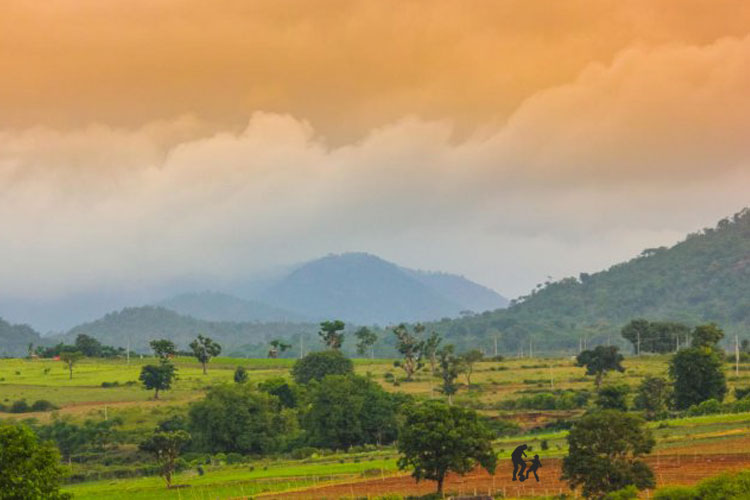
Mudigere is a Town Panchayath and Taluk in Chikkamagaluru district in the Indian state of Karnataka. There are 29 village panchayaths in Mudigere taluk. Kannada is the local language spoken here. It is known for it’s tea and coffee estates. There are many attractive tourist places in Mudigere.
Devaramane View Point Mudigere – 18 km
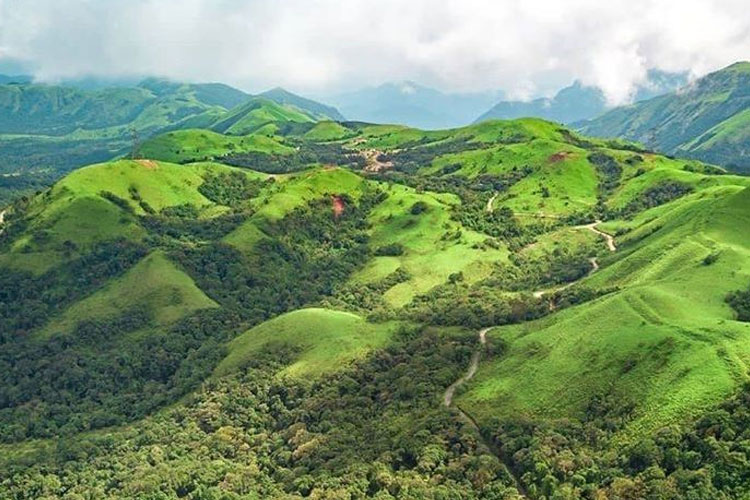
Devaramane is a picturesque village in Mudigere Taluk of Chikkamagaluru district in the state of Karnataka, India. It is one of the mesmerizing offbeat trekking places in Karnataka. Devaramane village is well known for its Kalabhairaveshwara temple. It is situated on a hill, this ancient temple amazing and is well maintained. . The term 'Devaramane' basically translates to the 'Abode of God' and the serene tranquillity that exists here quite aptly defines that nomenclature. There is a pond in front of the temple and a hill backside. This pond has watering holes for small animals adjacent to the jungle. The priest of this temple is kind and does provide you with lot of information about the place.
The route leading to the temple provides us with the mesmerizing view of the hills around and the road is in good condition. About 200 m from the temple, there is a viewpoint called Devaramane viewpoint that offers some all-encompassing views of the lush green surroundings, gurgling streams, and glittering lakes. It is also known for its Kurinji or Haarlu flowers. It’s the main tourist attraction.On one side is the beautiful Kurinji flowers , the other side has a spectaular view. They say this blossom occurs once in 12 years. Indeed a must visit place for all nature lovers.
Kudremuka Peak - Ettina Bhuja Peak – 23 km
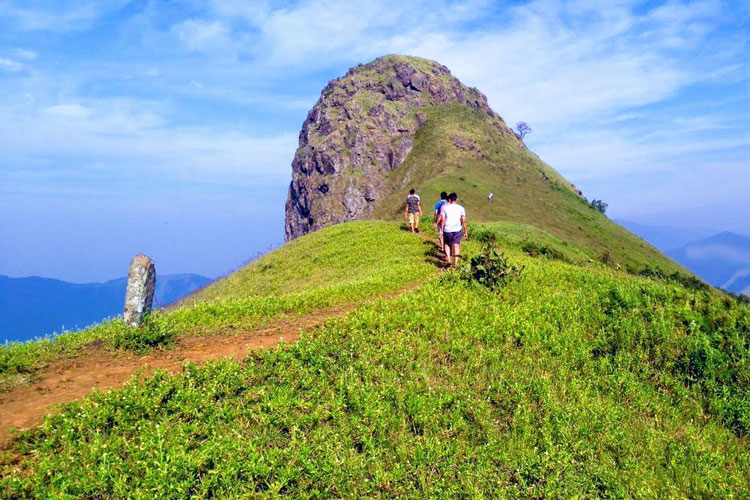
Ettina Bhuja peak is a wonderful site. Ettina Bhuja literally means ox’s shoulder. At 1,300 meters above sea level, it is situated in the Dakshin Kannada district of Karnataka. This lies in close proximity to Dharmasthala and is a part of the Charmadi Ghats. Tall trees, stunning views, and elegant natural backdrops accompany when you go through this way.
You can expect to view wonderful creatures which you would not see in the busy city life. . If you’re lucky, you will be able to see the spotted deer, brown palm civet, gaur, giant flying squirrel and many others. The serene beauty during the sunset on the peaks is something which is a must view site.
Mullayanagiri – 70 km
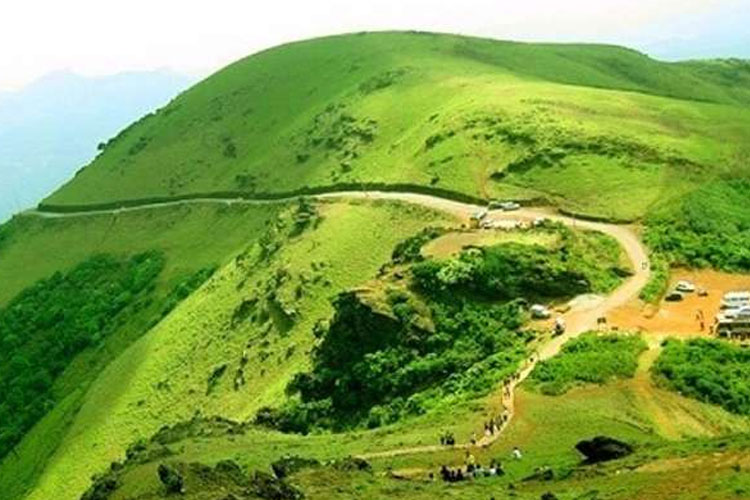
Mullayanagiri is a mountain peak located in Chikmagalur. With an altitude of 1950 m, it is the highest peak in Karnataka and a wonderful place to visit.
It is Regarded as the highest peak between the Himalayas and Nilgiris, Mullayanagiri is one of the best places for trekking in Karnataka. The peak gets its name from a small temple at the summit, which is dedicated to a Tapasvi Mullappa swamy, who is believed to have meditated at the cave near the summit. For people who love adventures , it is one of the best places to visit in Chikmagalur as it offers an opportunity to engage in various activities like mountain biking, trekking, and road biking.
Being the highest peak in Karnataka, it offers some very interesting trails. The trek route to the peak begins from Sarpadaari, which is connected with Chikmagalur by road. This is a 3 km long moderate level trek which is fairly steep and takes about 1.5 hrs to reach the peak. Direct road access is also available closer to the peak which needs less than 1 km trek and takes about 20-30 mins. The valley views from the top of Mullyanagiri are breathtaking. The landmarks on the trek path are a small stream, a Nandi statue, and a cave with a small water source inside. The Sunset presents a spectacular view from the peak. Other trekking trails from Mullayangiri are Baba Budangiri (12 km), Manikyadhara Falls (9 km) and Deviramma Temple (13 km). The best time to visit from September to February.
Beluru: Sri Chennakeshava Temple - 34 km
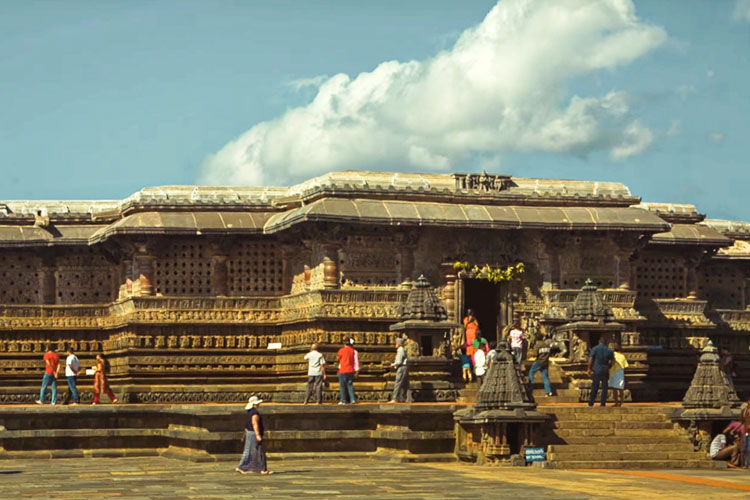
Beluru is situated on the banks of Yagachi River and was one of the capitals of the Hoysala Empire. It is well known for its magnificent Hoysala temple complex, the Chennakeshava Temple (also called Vijaya Narayana Temple), which was built by Hoysala King Vishnuvardhana to commemorate his victory over the Cholas in 1116 AD. The temple is believed to have been built by master craftsmen – Dasoja and Chavana, a father and son duo.
The Chennakesava temple is a fantastic example of aesthetic work of art in stone. There are more than 80 Madanika sculptures in the temple, dancing, hunting, standing under canopies of trees and so on. The 4 Madanika figures (striking elegant dancing poses) on the wonderfully engraved columns of Navaranga are unique creations of Hoysala workmanship. The Garbhagriha is stellar in shape and its zigzag walls make the figures of 24 forms of Vishnu look different at different times of the day due to light. The temple was built by master craftsmen – Dasoja and Chavana, a father and son duo, they were from Balliganve, a centre of Kalyana Chalukya art in Shimoga district. It is also said that Shantaladevi, the accomplished queen of King Vishnuvardhana is the model for one of the sculptures in the Vavaranga – Darpana Sundari. This work of art alone, speaks for the exquisiteness of the magnificient temple. The temples of Kappe Chennigaraya, Soumyanayaki, Andal and other Vaishnava manifestations surround this main temple.
HOYSALESHWARA TEMPLE HALEBEEDU 58 KMS
Vasanthika (Hoysalas) Temple, Angadi – 3.5 km
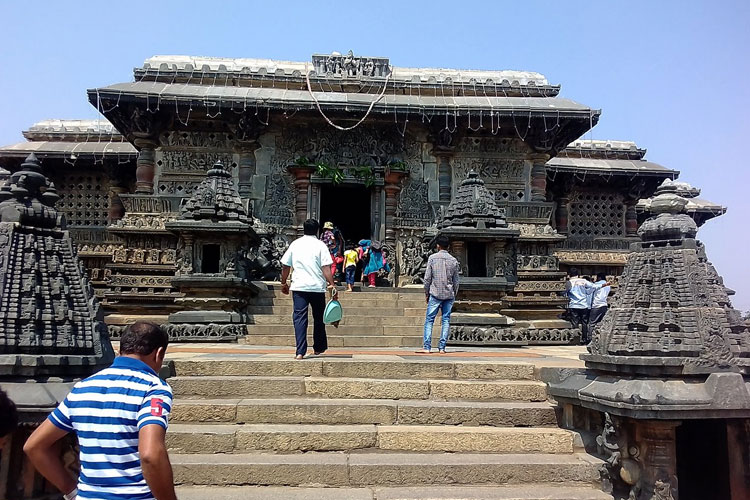
This temple is located between coffee plantations and open fields of Western Ghats. The Durga Temple stands as a witness to the legendary ruling of Hoysalas. And of their first capital remains of three temples dedicated to Lord Keshava, Lord Veerabhadra and Lord Malikarjuna respectively.
The story is believed to have happened more than 1000 years ago. at Sasakapura or Sosevur which is today identified as Angadi, a small hamlet in Chikmagalur district in Karnataka The temple of the Goddess , along with the ruins of more temples and basadis is the only proof of this myth.
People who love nature will love this place, as the temple is surrounded by greenery and place is very calm.
Sringeri Temple – 50 km
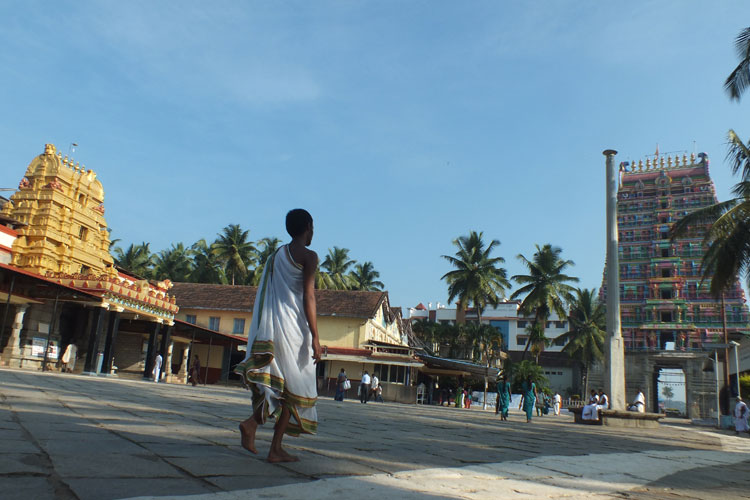
Sringeri is a town located in the Chikkamangaluru district in the state of Karnataka. It’s known for its temples.
There are a large number of temples with historical significance. Sri Sharadamba Temple, Sri Vidyashankara Temple as well as the Parshwanath Jain Temple are very important. At the entrance of the temple, one can sight the beautiful Vidyashankara Temple, which has a blend of the Dravidian, Viyayanagar and Hoyala style of architecture.
Shardamba Temple - 50 km
Sharada Devi sits as a deity in Shardamba temple. She is seen seated on a Chakra Peetham and a parrot is seen perched on the top of her hand holding a Japa mala. This matha is incharge of the Yadur Veda, which is very important in South India. The first image made is made of sandalwood that was installed by Adi Shankaracharya and it was later replaced by a golden image during the 14th century. The Sharada Navrathri festival is celebrated here for 11 days. Fridays holds a special prominence here because of a procession.
Vidyashankara Temple - 50 km
It has the famous for vidyathirta linga and it is a temple which was built for the memory of the Guru Vidyashankara. The temple was built during the 14th century with the help of the Vijayanagar rulers. This temple has twelve pillars which are called Rashistambhas (zodiacal pillars). The symbols of all of the twelve zodiac signs are engraved over the pillars. They believed that its design had some astronomical concepts and Sankara Jayanti is widely celebrated here.
Baba Budangiri - Dattatray Peeta – 78 km
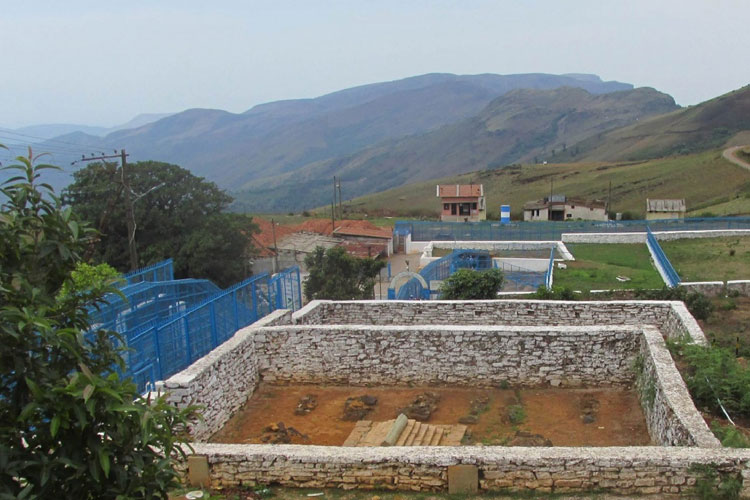
Baba Budan Giri is also known as Dattatray Peeta is a mountain range of the Western Ghats of India. Located in the Chikmagaluru taluk, Chikmagaluru District of Karnataka, Dattatreya peeta is known for its shrine.
The Baba Budangiri shrine is important to both Hindus and Muslims. The grave of Baba Budan- the Sufi saint, can be seen at the flat top of hill. From the Dargah of the islamic saint, a stairwell rises up to the Dattatreya Caves- believed to be inhabited by the hindu deity Dattatreya Swami. A sweeping view of the Chikmagalur valley from the shrine can be found down below.